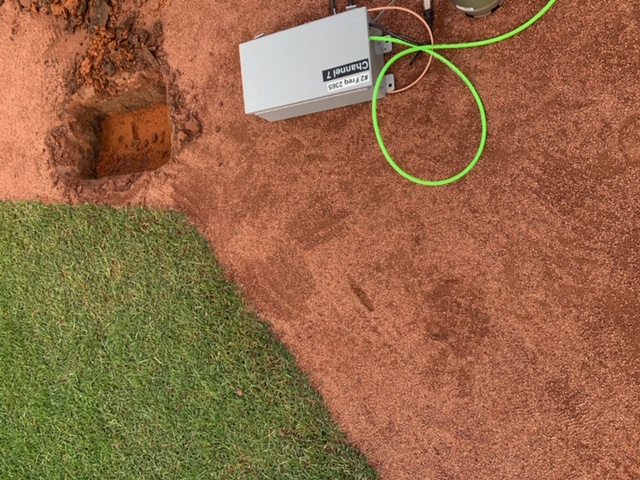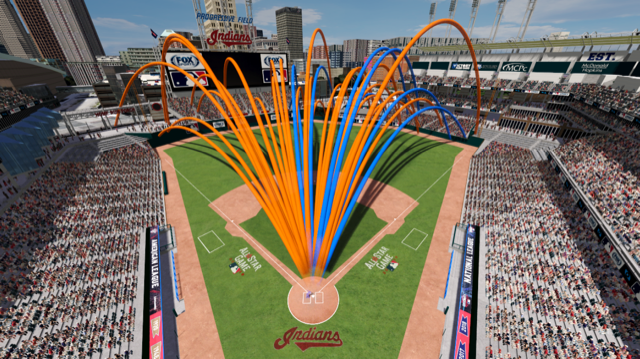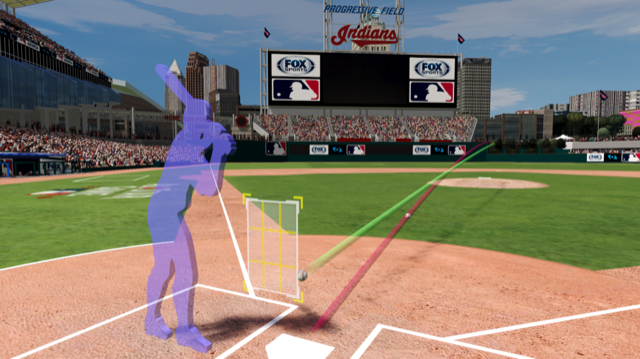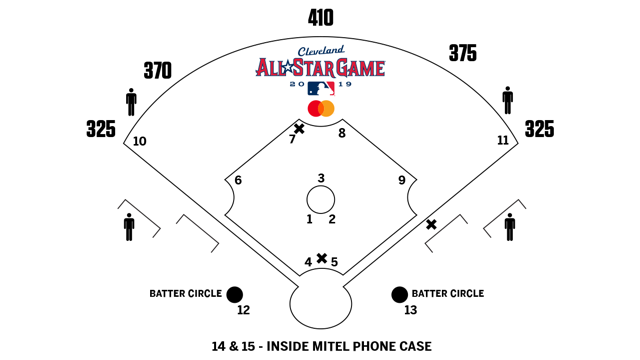Fox Looks To Flight Tracks, Dirt Cams For All-Star Game Production Sizzle
CLEVELAND—Dirt Cams make their return to All-Star Game action tonight after a brief hiatus as Fox looks to recapture the production excitement they offer.
“When Brad Zager, our executive producer, and I were looking through some old sizzle reels, we saw a fair amount of these Dirt Cams,” says Michael Davies, senior vice president, Field Operations, Fox Sports. “We thought those are really cool; we ought to put them back in.”
However, Dirt Cams aren’t the only new or reinvigorated production elements Fox will rely on for the game (coverage of the 90th Major League Baseball All-Star Game from Progressive Field begins at 8 p.m. EDT on the Fox broadcast network. Preview coverage begins at 7 p.m. on FS1, and pre-game coverage on Fox starts at 7:30 p.m.)

The broadcaster also is transplanting a technology familiar to fans of its golf coverage to offer a fresh perspective on hits, fly balls and home runs as well as suspending a SkyCam in right field and deploying a battery of cameras focused on home plate with the ability to do quick-turnaround 4D replays.
“The great thing about the All-Star Game is from a technology standpoint, since it’s an exhibition game, you can potentially do some things that you otherwise wouldn’t be able to do on a normal game,” says Davies. “And because you know where you’re going to be two years in advance, there’s a lot of location-specific things you can do in terms of set up.”
DIRTY DETAILS
Fox is deploying three Dirt Cams for tonight’s game coverage: outside first base, the only one with the ability to pan; on the fringe looking back at home plate; and near the fringe looking at second base.
A few years ago, the broadcaster decided to temporarily retire the Dirt Cams because of the logistics involved in using them. “You need the cooperation of baseball and the groundskeeper,” said Davies. However, with the luxury of a little more time to set up for the All-Star Game and “fantastic” facilities and groundskeeping personnel in Cleveland, the broadcaster decided the time was right to bring them back.
Get the TV Tech Newsletter
The professional video industry's #1 source for news, trends and product and tech information. Sign up below.
“These cameras give us a good look and the chance to see what we need to do to make them even better for post-season,” says Davies, who adds that tonight’s game is “really the starting of our prep for post-season” offering an opportunity to evaluate technologies that might show up in October.
Fox is also working with Animated Research out of New Zealand to do a baseball version of Flight Tracks used in its golf coverage.
“We’ve been working with these guys for the past five years, starting in Chambers Bay [Wash.] for our U.S. Open coverage,” he says. Davies credits the technology with delivering “a whole new real-time way of visualizing a golf stroke.”
For the All-Star Game, Animated Research has created a graphical representation of the field, and Fox Sports will marry it with data from Major League Baseball tracking batters swings to visualize hits in a whole new way.


Unlike golf, however, Flight Tracks won’t be used in real-time. “In golf, it’s easy to know when you’re going to be bringing this in because obviously everybody tees off. You can slide in the graphic.” But in baseball “you never know when a guy is going to hit a homerun,” explains Davies.
Perhaps in the future—based on factors like speed and launch angle—it might be possible to automate the use of Flight Tracks in baseball, but for tonight’s game Davies sees its use as a learning experience.
HANGING AROUND
SkyCam is another production element for tonight’s coverage that the luxury of time helps to make possible. Suspended in right field, the camera will hover around the Fox All-Star Game set, the plaza at Progressive Field and the bullpen. “This is something that’s kind of difficult to do if you don’t have a lot of time to prep,” he says.
The broadcaster will also integrate POV cameras on helmets of base coaches and 4D replays from cameras trained on home plate into its coverage.
Some of these technologies, such as the 4D replays and Flight Tracks, help to create a look for game coverage younger viewers particularly appreciate. “We kind of have a rule of thumb that the more our sports looks like video games—at least some of the elements—the better,” says Davies.
But there’s more to tonight’s coverage than its look. Audio is a major factor as well. Led by Emmy Award-winning mixer Joe Carpenter, the audio team will take advantage of 78 field mics, 14 RF infield mics, eight RF effects mics and a dozen mics for announcers, players and umpires.

“Between effects and player audio, this is probably the best environment for audio collection in all of baseball, followed closely by the post season,” says Davies.
From an audio standpoint, it is sometimes better to capture audio from the inside out rather than the outside in. “You do that to get effects that are otherwise hard to get from other types of mics, such as parabs and shotguns,” he explains.
Talking to players on the field is another important element. “Depending on who decides to do it [which player] and the time we have—obviously, nobody plays the entire game—we will have mics out there to give the announcers the opportunity to talk to players while they are in the game, which is pretty cool,” says Davies.
Having tonight’s game in Cleveland is an advantage because Fox Sports has been to the venue so much for post-season play that the broadcaster knows the building very well. “Just like we are going to know Dodgers next year,” adds Davies. “We’ve already got some thoughts about how we are going to cover Dodgers, so it is going to be fun.”
FOX Sports MLB All-Star Game Production Tech
Staff & Support
- More than 125 technicians
- 24 support staff
- 10,000+ man-hours over five days
Field Support
- More than 260 strands of fiber
- 3+ miles of fiber optic cable
- 3 edit bays
- 1 Gb/s of data connectivity
- 12 transmission paths
Cameras
- 35 HD game cameras
- 8 SSMo 6X (360fps)
- 2 Xmo (2000fps)
- 1 RF camera
- 1 RF stabilized camera (MOVI)
- 1 SkyCam
- 1 Aerial Camera
Audio
- Submix
- 12 RF player, announcer and umpire mics
- 8 RF FX mics
- 9 RF base mics
- 78 field microphones
- 14 RF infield microphones
Phil Kurz is a contributing editor to TV Tech. He has written about TV and video technology for more than 30 years and served as editor of three leading industry magazines. He earned a Bachelor of Journalism and a Master’s Degree in Journalism from the University of Missouri-Columbia School of Journalism.

